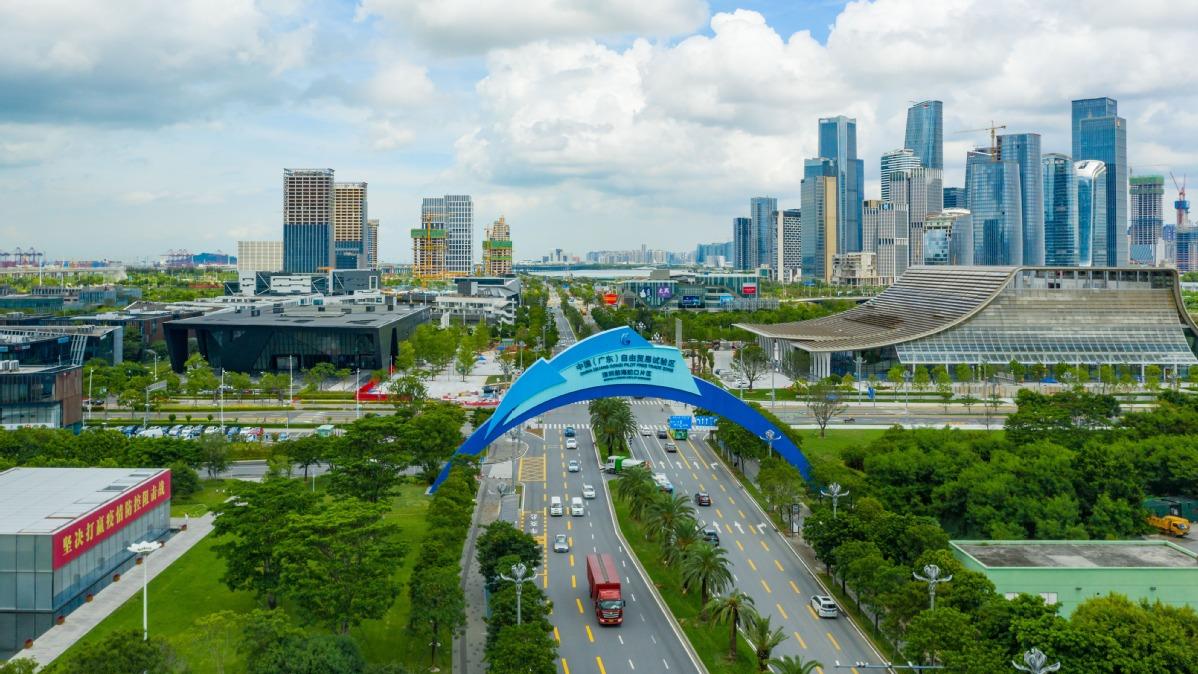 An aerial view of the Qianhai free trade zone in Shenzhen, Guangdong province. (LU LI FOR CHINA DAILY)
An aerial view of the Qianhai free trade zone in Shenzhen, Guangdong province. (LU LI FOR CHINA DAILY)
Many of Hong Kong’s vibrant startups have found their footing in Shenzhen’s Qianhai economic zone — envisioned to be a world-class business community within the next decade — with more favorable policies from the central government and a sound infrastructure in place.
In the past 11 years, up to 11,500 Hong Kong-financed companies have been licensed to operate in the sprawling economic zone, with total registered capital reaching almost 1.3 trillion yuan ($201 billion), according to the Shenzhen Qianhai Authority, which manages the zone.
“As we were preparing to launch an office in the Guangdong-Hong Kong-Macao Greater Bay Area, Qianhai offered a more appealing supporting package compared with other areas”, such as the Hong Kong-Shenzhen Innovation and Technology Park in the Lok Ma Chau Loop, said Sigrid Chen, chief operating officer of tech startup LaSense Technology, which provides gas detection system services.
“Most importantly, Qianhai not only offers subsidies for startups — it connects us with investors to get financing,” she said.
Founded in Hong Kong three years ago, LaSense completed its angel-round funding in January — two months after setting up its office in Qianhai.
Qianhai can be the steppingstone for Hong Kong startups seeking to tap the business potential in the Greater Bay Area, as well as the vast Chinese mainland market, said Chen, adding that most of the company’s clients are industrial companies based in Guangdong province.
Stephen See, vice-chairman of Hong Kong Chamber of Commerce, Qianhai, and founder of smart-hardware business incubator Trend Tech Design, which operates in Hong Kong and Qianhai, said he’s happy with the progress of his company’s operations in Qianhai so far. “My team expanded rapidly after we got our Qianhai office off the ground. This is the best proof that we’re doing well. It also applies to the overall expansion of Qianhai. Successful experiences tell the story,” he said.
Qianhai’s development shouldn’t be seen as “favoring one over the other” or “either one or the other”, as far as Shenzhen and Hong Kong are concerned. It’s a win-win scenario, See said. “As a young Hong Kong entrepreneur in Shenzhen, I’m optimistic about Qianhai, Shenzhen and Hong Kong. The latter two will work together to create a better future for the Greater Bay Area.”
More seasoned Hong Kong entrepreneurs are following suit in their efforts to get a slice of the bigger pie. “Hong Kong’s market is relatively small, and the loop between research and commercialization is longer,” said Torin Fung, co-founder and CEO of InnoAIbator — a tech startup using artificial intelligence and big data for intellectual property-rights assessment. The company plans to open its Qianhai office next year.
Fung explained that the path for the designing and testing of tech companies is more flexible in Qianhai than that in Hong Kong, where launching new products is often hindered by a basket of regulations.
He said that the subsidies offered by Qianhai to Hong Kong tech enterprises are very attractive. “And, you can receive them in about three months, while in Hong Kong, you need to wait for at least six months.”
Qianhai’s growth is particularly beneficial to young entrepreneurs from Hong Kong who are diving into cutting-edge technology such as artificial intelligence, Fung said. Hong Kong’s younger generation should understand the mainland market and explore the nation’s major development areas, he said.


